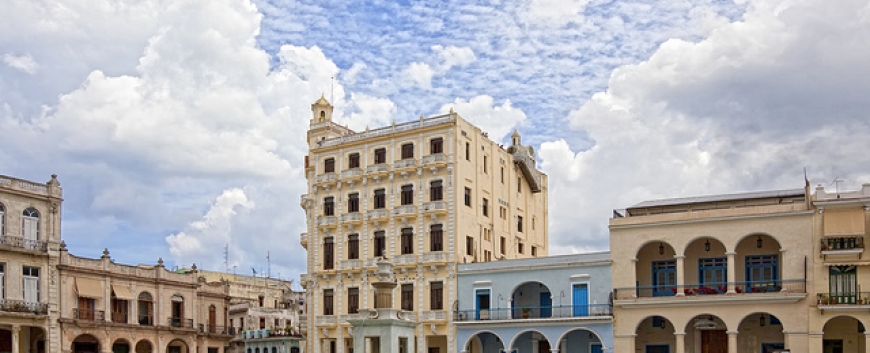Architecture in Cuba: Havana
It’s well known that traveling to Havana is like traveling back in time: the weathered buildings, the old classic cars and the rich history standing out as top lures on your visit to Cuba. It’s less known however, that at the beginning of the 20th century, the Cuban capital was spectacularly rich – not unlike Newport’s Gilded Age – in which Havana underwent an extraordinary boom period, architecturally enriching with international influences such as art nouveau, art deco and eclectic design.
To this day, Havana is one of the most architecturally diverse cities in the world, and safe to say, a city photographer’s paradise. Its buildings clearly mirror its social and political history ever since the Spanish colonial times, up to the more modern present day.
Colonial & baroque period

Ever since the arrival of Christopher Columbus in 1492, Havana became a key transshipment point between the Old World and the New World, with resources being brought from the colonialists into and through the city. As a result, Havana was the most heavily fortified city in the Americas. Most examples of early architecture can be seen in military fortifications such as La Fortaleza de San Carlos de la Cabana (1558-1577), located at the entrance of Habana Bay, which now acts as symbol of the wealth at that time.

The biggest impact the different cultures had upon the Cuban capital can be seen in Havana's colonial architecture, with a strong Moorish and Spanish influence, including Italian, Greek and Roman styles.

Photo by Dean Ayres, © some rights reserved
The Convento de Santa Clara is a good example of early Spanish influenced architecture, while the Cathedral dominating the Plaza de la Catedral (1749) is most representative of Cuban Baroque.
Neo-classical period
The beginning of the 19th century and the now implanted Spanish influence, brought upon the unequalled recurrent arcades, with many interior patios similar to the designs in Seville, Cadiz and Granada.


Neo-classicism soon took over and influenced buildings all over the city. The Aldama Palace (1844) is considered the most important neoclassical residential property in Cuba, one that exemplifies the look of this period: columns facing spacious courtyards and French inspired lavish interiors. The peak of Neoclassicism came with the construction of the Vedado district (1859), a neighborhood rich with notable buildings.
Art Nouveau, Art Deco & Eclectic influences
During the first decades of the 20th century, Havana expanded more rapidly than at any other time throughout its history. Havana became – along with Buenos Aires – the finest city in Latin America. This prompted Havana’s architecture to be infused with the art nouveau, art deco and eclectic styles from abroad. Not only that, but the 1902 Real Estate Record and Guide imposed strict levels of regulation: balconies, ornaments and even colors required approval, while the architect had to present an elevation drawing of the entire block, to make sure the house was aesthetically agreeable within the neighborhood.

Wealthy districts quickly came to existence, such as Miramar, set out on the American street grid pattern and home to diplomats and foreigners. Prado Boulevard became a Fifth Avenue of sorts, while the section around Obispo and O’Reilly Streets was home to so much banking construction that it was nicknamed “little Wall Street.”

The 1912 Spanish Railway Terminal, with its twin towers, terra-cotta medallions and broad waiting room, as well as the Capitolio, an exact replica to half its size of the Capitol building in Washington DC, are a good example of the eclectic style.

Photo by Sue Kellerman, © some rights reserved
The Lopez Serrano Building (1932) by Ricardo Mira is Cuba’s first tall building, inspired by the Rockefeller Centre in New York, while The Edificio Bacardi (1930) is one of Havana's most outstanding buildings and the best example of Art Deco.
So take the leap and step back in time, for just 90 miles off the coast of the United States, there’s a fascinating aesthetic journey waiting. Whether it’s discovering Old Havana – a UNESCO World Heritage Site - or the eclectic styles of the more present days, Havana’s architectural diversity won’t disappoint!
Written by Monica Suma. You can follow her on Twitter at @MonicaSuma.














